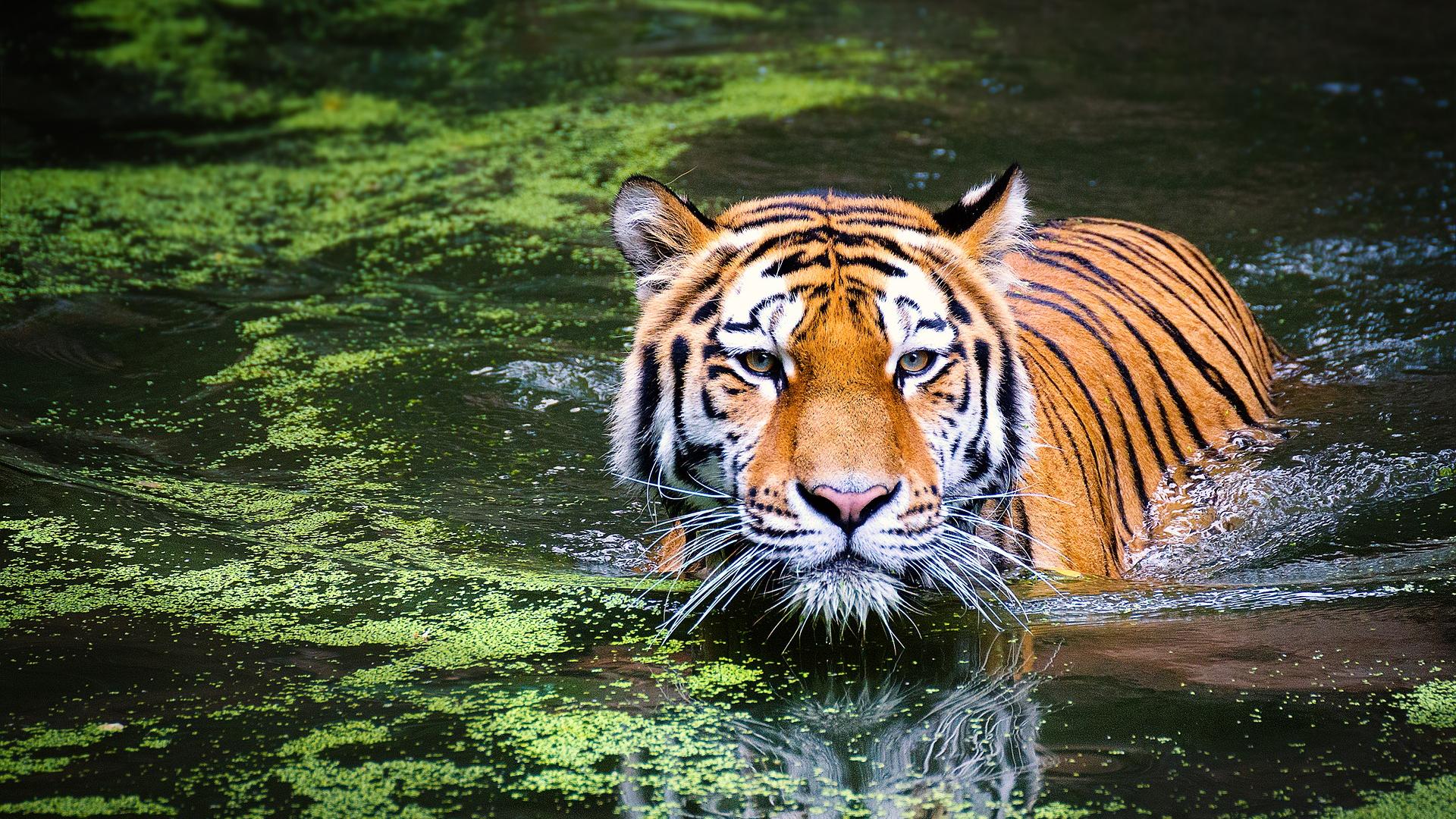Paul de Zylva02 May 2019
Our natural world is in trouble. We are witnessing the demise of the real world wide web of life as countless wild species are driven toward extinction. Nature’s rich habitats and life support ecosystems are being eroded in a global game of Jenga.
This article outlines the compelling evidence of nature’s decline and how the loss of species and habitats, and harm to ecosystems are undermining life on earth – including our own existence. It summarises the causes and the solutions to bringing nature back.
Why nature’s decline matters
A majority of UK wild species are in longterm decline. Similar declines in wildlife and natural ecosystems are being recorded across the globe, especially in nature hotspots like the tropics.
Nature’s loss matters because abundant wild species and habitats and fully-functioning natural ecosystems are necessary for all life on earth.
Why? Because bees, moths and bats make much of our food possible just by pollinating crops like apples, beans, cocoa, coffee, tomatoes and more.
Without healthy functioning ecosystems, such as healthy soils and an intact web of wild species and habitats, basic life support systems are in jeopardy.
Jeopardy means risking reliable, plentiful supplies of clean air, pure water and nutritious food and the dependable and resilient natural systems that regulate our weather, rainfall and temperature.
By letting species decline and even vanish we’re playing a global game of Jenga. We can’t tell how and when our actions will result in the collapse of our stable and productive natural ecosystems to something less benign1.
Impacting on the world's poorest
Everyone will be affected by nature’s decline especially those who are least able to fend for themselves. Evidence points to the world’s poorest people already experiencing the effects of eroded ecosystems.
For example, the loss of mountain forests can lead to loss of life and livelihoods when soil erosion exacerbates flooding or landslides. Research has identified that just 10% loss of forests can increase the frequency and duration of flood events:
”Unabated loss of forests may increase or exacerbate the number of flood-related disasters, negatively impact millions of poor people, and inflict trillions of dollars in damage in disadvantaged economies over the coming decades2.”
What is the evidence of nature’s decline?
“The best available evidence, gathered by the world’s leading experts, points us now to a single conclusion: we must act to halt and reverse the unsustainable use of nature – or risk not only the future we want, but even the lives we currently lead.” Sir Robert Watson, Chair of the Intergovernmental Panel on Biodiversity and Ecosystem Services (IPBES).
A brief look at just a handful of recent studies shows mounting stark evidence of nature’s demise:
- 26,000 wild species face extinction3.
- Animal populations are on average half the size they were just 40 years ago4.
- About a third of the world’s land surface has lost more than 20% of wild species5.
- Human activity is degrading the quality of land, undermining the wellbeing of over 3 billion people, driving extinctions and intensifying climate change6.
- Less than a quarter of the Earth’s land surface has escaped substantial impacts of human activity. By 2050, this will have fallen below 10%7.
- Rates of species extinction are 100 to 1,000 times higher than the background rate8.
Evidence of nature’s demise is not new. The 2005 Millennium Ecosystem Assessment, the largest study of its kind at the time, reported that about two-thirds of the world’s natural ecosystems were degraded and being used in irresponsible, unsustainable ways. The planet had lost half of its wetlands, 40% of its forests and 35% of its mangroves in the 20th century9.
Are we facing the world's sixth mass extinction?
The first mass extinction, the Ordovician-Silurian about 439 million years ago, wiped out 86% of species especially in the oceans. The fifth extinction, the Cretaceous-Tertiary, is famed for asteroid hits and the demise of dinosaurs. The current epoch, the Anthropocene, marks the start of humans shaping life on earth.
It’s important to say that extinction can be part of normal, natural processes of evolution. Records do not exist for every species for practical reasons, mammals and birds being easier to monitor than insects and sea creatures. So global data on species decline covers only those known species for which there is reliable data.
The main question is: Are the rates of losses for species with reliable records normal or excessive?
For example, there are now just 4,000 tigers left in the wild, a decline of over 90% from the 100,000 that roamed free in 1900. Is that decline normal when tigers have been hunted and their habitat ruined? Studies suggest that is not a normal decline for top predators like tigers and that species losses in general are happening at a faster rate than would be expected:
“…the number of species that have gone extinct in the last century would have taken, depending on the vertebrate taxon, between 800 and 10,000 years to disappear. These estimates reveal an exceptionally rapid loss of biodiversity over the last few centuries, indicating that a sixth mass extinction is already under way.”10
What about other creatures? A 2016 Stanford University-led study looked at unusually high losses of larger marine creatures – sharks, tuna, turtles and whales – and a 2017 Stanford and NAUM study of trends in lost species described them as a biological annihilation. The study of over 27,000 vertebrate species and 177 mammal species stated that “…we show the extremely high degree of population decay in vertebrates, even in common ‘species of low concern’.”11
A 1995 study concluded that species are going extinct 100-1000 times faster than before humans came along12 and in 2015 another reported that, on average, approximately 13% of local species diversity has been lost across the world in the past 500 years13.
That study predicts rapid further losses if nothing changes. If current land use and other harmful practices continue, losses would be “concentrated in biodiverse but economically poor countries”, a reference to the world’s biodiversity hot spots which tend to be in the world’s less-wealthy areas.
It concludes that “strong mitigation (measures to counteract biodiversity loss) can deliver much more positive biodiversity changes (up to a 1.9% average increase) that are less strongly related to countries' socio-economic status.”
What is driving nature’s decline?
The evidence points to the main causes of the decline of nature and ecosystems being:
Habitat loss
This is the direct, often deliberate, destruction of natural habitats. The decline in their size, quality and fragmentation has consequences for countless plant and animal species which lack food, shelter, space and conditions to thrive as a result.
Pollution
This is both direct and indirect pollution of land, soils, waterways, beaches and seas, such as from routine industrial emissions or spills, and routine pollution such as oil running off roads into rivers and leaks from landfill waste sites.
How we farm
Both intensive, industrial farming practised by wealthier nations and industrial farming interests and shifting agriculture practised by poorer communities are identified as driving nature’s demise.
How we build
Insensitive and poorly managed growth of towns and cities and related infrastructure to supply urban populations with food and fuel is driving habitat loss both in and around cities and far away through global supply chains.
Double trouble
We are starting to observe the interplay of declining nature and climate change. Healthy, thriving nature can build resilience to a changing climate. Weakened, depleted nature and ecosystems make us more vulnerable.
Other factors
Evidence points to nature’s decline also being driven by hunting and the illegal trade in endangered species, by the spread of invasive species – the wrong plants and creatures in the wrong place – and by sectors such as timber, mining and minerals extraction and commodities exploitation such as the production of cocoa, coffee, palm oil and soy.
The 2019 United Nations Global Resources Outlook report has also identified drivers of nature’s decline as the unsustainable production and consumption patterns in most countries along with the growing effects of climate change14.
The report states that the evidence is of environmental decline worsening with the window for action closing if we are to get on track to hit the globally agreed Sustainable Development Goals (SDGs) by 2030.
The SDGs are all about meeting the needs of humans without undermining the healthy environment we all need as a prerequisite for health and wealth.
The Outlook report says that “a whole-of-society approach” is needed – not just more environment policies which too often come a distant second to economic, business and other interests – to get on track to genuine sustainable development.
The cost and economics of nature’s decline
A major study estimated that if no action is taken to arrest current rates of degradation, the global value of lost ecosystem services would be between $2 trillion and $4.5 trillion per year from deforestation alone.
The Economics of Ecosystems and Biodiversity (TEEB) study also estimates that the loss of land-based natural ecosystems cost around €500 billion just in the first decade of the 21st century.
Maintaining nature’s diversity and capacity to provide the functions upon which we rely is likely to be good value for money. It is proven to work when given a chance and is cheaper and a better form of governance than having to replace them by investing in heavy infrastructure or unproven technical fixes.
It is also questionable whether the money exists to pay for the damage if we let nature and natural ecosystems continue to decline. The value of the world’s natural ecosystem services has been put at an average $33 trillion pa, nearly twice global GNP of $18 trillion.
Where is the money coming from to cover that cost?
Solutions to save and restore nature
We need a shift from an intensive assault on nature to intensive conservation and restoration. The many solutions to protecting and restoring nature and ecosystems all rest with us.
Scaling up proven solutions also means extending proper protection and stewardship to more of the earth’s surface and oceans. For nature to thrive, not just survive, we need nature everywhere.
Nature everywhere
There should be no areas where nature is not thriving and where ecosystems are not fully functioning. That means action for nature not just in designated reserves – on land, at sea, in town and countryside alike and across whole landscapes.
Confining nature to certain areas while letting rip everywhere else with damaging farming, infrastructure and other development is folly. That said we do need nature reserves and many more of them, including more properly managed marine reserves to protect ocean life and the sea bed.
Protected areas
Allowing nature reserves and national parks to be mined for minerals, drilled for oil and gas, felled for timber and to create new farmland puts these foundations of nature conservation at risk.
Intensive farming reform is a must
Reforming how we farm and produce and protect food and other crops is a must. That includes reforming the perverse financial subsidies and incentives which permit land to be used in nature-harming ways.
Urban design
Most of the world’s population now lives in urban areas and the way towns and cities are designed and managed for people, for nature and sustainable use of energy, materials and food is central to human progress.
Doing all of this is necessary to avoid the double trouble of climate chaos and nature’s decline.
Will our governments act to save nature?
There is no lack of evidence. Governments, businesses and civil societies have been fully briefed on the causes of nature’s decline.
They are not starting with a blank sheet. Some political impetus to protect and restore nature already exists in the form of major policies and agreements on nature, such as:
- the UN’s global Convention on Biological Diversity (CBD)15
- the UN’s Sustainable Development Goals (SDGs)16
- the UK’s own policies, including those it helped enact as a member of the European Union, eg, the Habitats and Birds Directives.
The fact that these profoundly important agreements are not being properly observed and implemented is a failure both of governance and politics and of our economic system.
What governments must do to stop nature's decline
Governments must adopt and be consistent with policies which reflect the evidence and the urgency of arresting nature’s decline.
They must start with properly protecting what we already have. There is no substitute for proven forms of nature conservation – seen in successful efforts to revive degraded habitats, conserve threatened species and protect entire ecosystems and landscapes.
Effective action continues by deploying measures, incentives and requirements to ensure the full and active involvement of all sectors of society. From land owners and users to businesses, investors and financiers to academics and scientists and communities and communities of interest.
A review of how well world governments are doing to reach the biodiversity goals agreed in the CBD found that although progress on protected areas has increased (to around 15% of terrestrial and inland waters and 7% of marine areas), these are not necessarily the most important areas and they may not be protected in practice.
The review also found that out of 46 indicators of progress on the CBD the majority were heading in the wrong direction. Failure on the CBD also means failing on SDGs.17 Such failure brings into question whether the way government operates is fit for purpose. Political leaders tend to be preoccupied with sustaining the drivers of nature’s decline rather than ending them.
Governance and government need a major overhaul to gear their entire activity to reversing nature’s decline without half measures, compromises and tinkering at the margins of what is needed.
- 1Biodiversity loss raises risk of 'extinction cascades’, University of Exeter, 2018 https://www.sciencedaily.com/releases/2018/02/180219155019.htm
- 2Global Evidence that Deforestation Amplifies Flood Risk and Severity in the Developing World, 2007 https://www.researchgate.net/publication/225071527_Global_Evidence_that_Deforestation_Amplifies_Flood_Risk_and_Severity_in_the_Developing_World
- 3The IUCN’s global Red List says 41% of amphibians, 34% of conifers, 33% of coral reefs, 31% of rays & sharks, 25% of mammals and 13% of birds are on the edge of existence. https://newredlist.iucnredlist.org/
- 4The WWF/Zoological Society Living Planet Index report (2018) shows that freshwater wild species are particularly reduced, with on average an 82% reduction in population. http://www.livingplanetindex.org/home/index
- 5Mace, G. M., Barrett, M. Burgess, N. D., Cornell, S.E., Freeman, R., Grooten, M., Purvis, A. (2018). Aiming higher to bend the curve of biodiversity loss. Nature Sustainability DOI: 10.1038/s41893-018-0130-0 https://www.science.ku.dk/english/press/news/2018/experts-highlight-need-for-a-paris-agreement-for-nature/AND https://www.nature.com/articles/s41893-018-0130-0
- 6Assessment Report on Land Degradation and Restoration, Intergovernmental Science-Policy Platform on Biodiversity and Ecosystem Services (2018) https://www.ipbes.net/assessment-reports/ldr www.ipbes.net/news/media-release-worsening-worldwide-land-degradation-now-%E2%80%98critical%E2%80%99-undermining-well-being-32
- 7Assessment Report on Land Degradation and Restoration, Intergovernmental Science-Policy Platform on Biodiversity and Ecosystem Services (2018) https://www.ipbes.net/assessment-reports/ldr www.ipbes.net/news/media-release-worsening-worldwide-land-degradation-now-%E2%80%98critical%E2%80%99-undermining-well-being-32
- 8Proença, V. & Pereira, H. M. Ref. Mod. Life Sci. https://doi.org/csjx (2017)
- 9Millennium Ecosystem Assessment (2005)
- 10National Autonomous University of Mexico with the Universities of Stanford, Princeton and Berkeley and Florida, 2015
- 11Ceballos G, Ehrlich PR, Dirzo R, Biological annihilation via the ongoing sixth mass extinction signaled by vertebrate population losses and declines, 2017, Proceedings of the National Academies of Sciences of the United States of America,; 114(30): E6089–E6096. doi: 10.1073/pnas.1704949114
- 12Pimm, SL. Russell GJ, Gittleman JL, Brooks TM, (1995) The future of biodiversity, Science, Vol 269, (1995)
- 13Newbold, T. et al. Nature 520, 45–50 (2015)
- 14 IRP (2019). Global Resources Outlook 2019: Natural Resources for the Future We Want. Oberle, B., Bringezu, S., Hatfeld-Dodds, S., Hellweg, S., Schandl, H., Clement, J., and Cabernard, L., Che, N., Chen, D., Droz-Georget , H., Ekins, P., Fischer-Kowalski, M., Flörke, M., Frank, S., Froemelt , A., Geschke, A., Haupt , M., Havlik, P., Hüfner, R., Lenzen, M., Lieber, M., Liu, B., Lu, Y., Lutter, S., Mehr , J., Miatto, A., Newth, D., Oberschelp , C., Obersteiner, M., Pfster, S., Piccoli, E., Schaldach, R., Schüngel, J., Sonderegger, T., Sudheshwar, A., Tanikawa, H., van der Voet, E., Walker, C., West, J., Wang, Z., Zhu, B. A Report of the International Resource Panel. United Nations Environment Programme. Nairobi, Kenya. www.resourcepanel.org/reports/global-resources-outlook
- 15CBD https://www.cbd.int/
- 16SDGs https://www.un.org/sustainabledevelopment/
- 17https://www.un.org/sustainabledevelopment/



